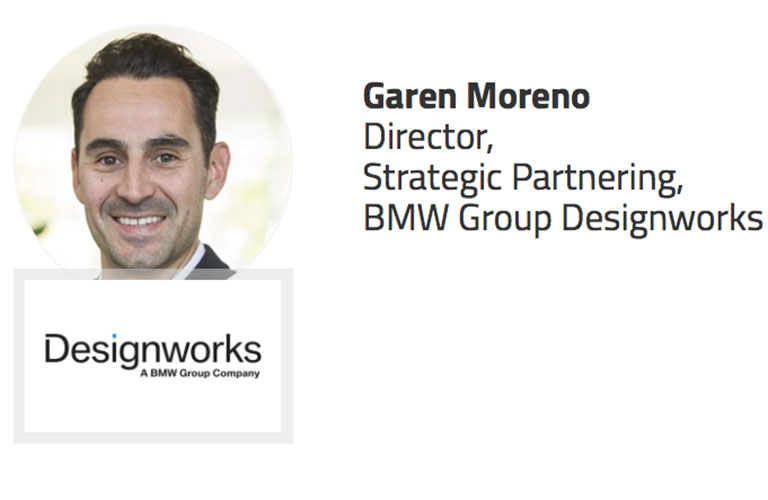Garen Moreno, Director, Strategic Partnering at BMW Group Designworks and Host of ‘Departure Unknown’ podcast, led an ‘Up in the Air’ co-creation working group at Future Travel Experience Global 2016, focusing on “What inspiration can airlines and their partners take from other sectors to create unique in-flight environments and experiences?” Here he shares the findings from that discussion, including insight on the macro trends that are shaping the future onboard passenger experience.
Dear commercial aviation industry – it’s the end of the world as we know it…and I feel fine. There are some interesting trends afoot that will have a major impact on the business of flying people around the world. This past September, Future Travel Experience (FTE) hosted their annual FTE Global event in Las Vegas. As part of the event, FTE scheduled roundtable/co-creation discussions where the conference attendees split off, by interest, into sub groups to tackle some of the most pressing topics facing the commercial aviation industry.

I had the opportunity to lead a roundtable discussion on the future onboard passenger experience. Our group consisted of IFE suppliers, satellite communications manufactures, airlines, APEX organisation leaders, and airframe and avionics manufacturers. This well-rounded and vocal group hashed through the macro trends that are shaping the future onboard passenger experience.
The following are the most important key trends that we will have to watch out for in the creation of onboard products and experiences in the near future.
1. More and more people are travelling to more and more places
Air travel is becoming accessible for the majority of people on the planet and with that comes massive diversity in passenger expectations. From the million miler to the first time traveller from an underdeveloped country, our products/services must be both intuitive and flexible, which can often be opposing forces.
Why this is important?
With so many different types of travellers, it is very important to pay extra attention to the extremes. We often focus on the “core demographic” but we provide a service for so many travellers with more or less experience in the air. The products and services must address basic needs as well as tap into cultural elements that reinforce the experience. For example, when designing signage at an airport, a connectivity interface, or even a lever in the lavatory, if it needs to be explained, downloaded or translated it is already too complicated.
2. Looking vertically to find new comfort solutions
The cylindrical tube called a fuselage is not going to change that much in the near future; however, how we use the space inside will. Exploring vertical space as a way to enhance comfort is becoming common among those designing and developing interiors. From seats that raise and lower to passenger sleeping areas in what is currently space used for cargo, when we begin to use all the space above and below the flight deck, the aeroplane becomes suddenly much larger…and hopefully more comfortable. Let’s just hope the density targets don’t triple.
Why is this important?
This adds a new dimension to product development and service. As passengers experience the added comfort from some of these solutions it will cause many airlines and cabin interior manufacturers to react. Imagine the lie-flat revolution all over again and get ready, because this is already happening.
3. Digital Life – integration of smart tech into EVERYTHING
There are three key things that are afoot in Digital Life.
I. Super apps are teaching us that you can interact with your environment using natural language and expect a smart response back.
II. Dematerialisation as a trend for individual transportation means we are moving less and less stuff around with us. Travel can be looked at as moving experiences around the world…not stuff.
III. Our physical world is coming to life. Ubiquitous sensors and the ability to interact with all objects around us will drive passengers to expect personalisation in all aspects of their travel journey.
Why is this important?
As our environments get smarter, our experience expectations will dramatically evolve into wanting the objects around us to enhance our life. For example, the Internet of Things will be making its way onboard to create adaptive and personalised experiences that are scalable. Seating should adapt to me as an individual.
On demand problem solving like gate changes, navigating airports, tight connections and mishandled luggage should be managed for us by the digital world around us.
With the trend in dematerialisation, we are drawn toward experiences, not just places. This means that how we engage with passengers should address the unique experience aspects of travel, not just the logistical aspects.
In summary, as moving ourselves around the world becomes easier and easier, the digital experience that we have to enhance the experience of travel will become a focal point. The limitations in space on board can only be addressed incrementally. Until we completely redesign the aircraft interior, opening up new comfort opportunities, we must rely on the digital experience to simplify and enhance the onboard experience.
The most important detail is that the digital layer that we embed into our products/environment must be hyper flexible.
When creating content, plan for that content to be interpreted by a third party uncontrolled device or application, i.e. (tablet OS, smartwatch, smartphone, Bluetooth headphones, etc.). When designing a product experience, the digital layer must be carefully integrated, providing one level of easy data for translation to other devices and another layer of data for a controlled, simplified passenger experience.
We are nearly fully reliable on digital services for our day-to-day and because of it, we expect more from each moment. Extend this trend forward and you can see how the world as we know it will change forever…and hopefully we will all be just fine when it does.






